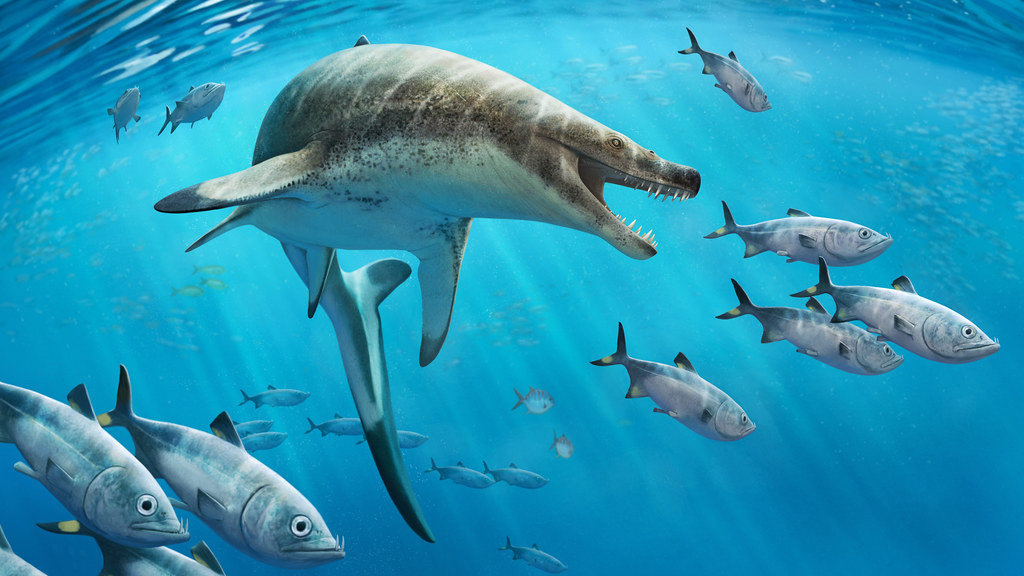A team of palaeontologists has recently uncovered an unusual marine lizard species characterized by sharp, dagger-like teeth that lived in the late dinosaur period.
The research, published in Cretaceous Research, reveals a vastly dissimilar ocean ecosystem from the one we know today. Unlike current ecosystems where a small number of apex predators such as great white sharks, orcas, and leopard seals reign supreme, this prehistoric ecosystem was dominated by multiple massive top predators that fed on larger prey.
The species Khinjaria acuta belonged to the family Mosasauridae, also known as mosasaurs, and was about the same size as an orca, measuring 7-8 meters. Although often mistaken for dinosaurs, mosasaurs were enormous marine lizards, closely related to modern-day Komodo dragons and anacondas. They were the dominant creatures of the ocean 66 million years ago, during the time of Tyrannosaurus and Triceratops.
Khinjaria possessed formidable jaws and sharp, dagger-shaped teeth which it used to capture its prey. This species was one of many predators that thrived in the Atlantic Ocean near the coast of Morocco until the time of the dinosaurs’ extinction.
The research was conducted using a skull and fragments of the skeletal system acquired from a phosphate mine located south-east of Casablanca. The study was led by a team of scientists from the University of Bath in the UK, along with collaborators from the Marrakech Museum of Natural History, the Museum National d’ Histoire Naturelle in Paris, France, Southern Methodist University in Texas, USA, and the University of the Basque Country in Bilbao.
According to Dr Nick Longrich, who headed the research at the Department of Life Sciences and the Milner Centre for Evolution at the University of Bath, the most notable aspect is the vast range of apex predators. He says there are numerous species that exceed the size of a great white shark and hold the top position in the food chain. However, their unique teeth structures indicate that they have distinct hunting techniques.
It is thought that the species was wiped out, along with many others, by the impact of a huge asteroid on earth, which resulted in the release of dust and tiny particles into the upper atmosphere, leading to a prolonged period of darkness and cooling.
Following the impact, a shift in the ecosystem resulted in the extinction of mosasaurs, plesiosaurs, and giant sea turtles, as well as various families of fish. This created an opportunity for the emergence of whales and seals, as well as the appearance of swordfish and tuna. However, the newly evolved ecosystem displayed distinct differences from its predecessor.
